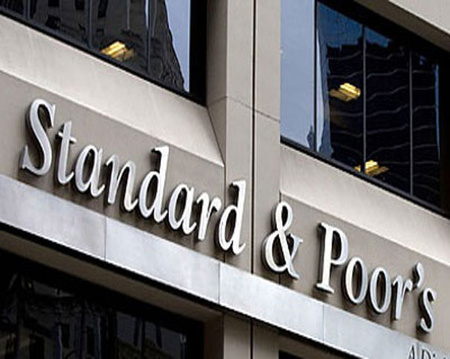Baku, Azerbaijan, March 20
Trend:
Standard & Poor's views the trend for industry risk in Azerbaijan's banking sector as stable, and expect that the industry structure will remain broadly the same, S&P said March 20.
"This backs our view of Azerbaijan's government as supportive of the domestic banking sector," S&P analysts said. "We believe that the recent increase in minimal capital requirements for the banks to Azerbaijan manat 50 million (approximately $48 million) will not change the domestic competitive landscape materially. The banking system has a relatively high level of core customer deposits, with no material reliance on external funding."
Unlike banks in peer countries such as Hungary or Georgia, Azerbaijani banks had limited risks from foreign currency lending before 2015. This was due to de facto manat-to-U.S. dollar peg and a fairly stable exchange rate over the past five years.
"However, we observe that the peg has loosened, and the manat depreciated by 34% in January and February 2015," the statement said. "Consequently, we believe that lower confidence in the manat may lead to currency imbalances in banks' balance sheets over the next 12 months. That said, we already incorporate this in our assessment of the country's extremely high credit risk in the economy."
In our opinion, economic risks for Azerbaijani banks have increased because of the slowdown of the domestic economy, due to the pronounced drop in international oil prices and sharp depreciation of the manat in early 2015, the statement said.
"As a result, under our methodology for banking industry and country risk, we now view the economic risk trend in Azerbaijan as negative, rather than stable," the statement said. "This reflects our opinion of increasing challenges that could constrain domestic banks' business growth and earnings prospects."
Azerbaijan's economy and general government revenues depend on the oil and gas sector, which we estimate contributed about 44% of GDP and 95% of merchandise exports in 2013-2014.
"We have recently significantly lowered our expectations on oil prices for 2015-2018," the agency said. "We now forecast that the oil price will decrease to $55 per barrel in 2015 and modestly recover to an average $75 per barrel in 2016-2018. In 2015, we anticipate that the economy will expand by only 1.9%, down from 2.8% in 2014, because oil production and exports will continue to shrink, and the non-oil sector, especially construction, will be affected by lower public-sector capital investment. We expect nominal GDP, on the other hand, to contract by more than 10% this year, due to the sharply lower oil prices."
Given Azerbaijan's commodity-led economy and the substantial drop in oil prices in 2014, we believe that these factors may erode banks' asset quality.
Azerbaijan's banking sector refers to the group 8 according to the Banking Industry Country Risk Assessment (BICRA).
BICRA economic risk and industry risk scores are on a scale from 1 (lowest risk) to 10 (highest risk).






